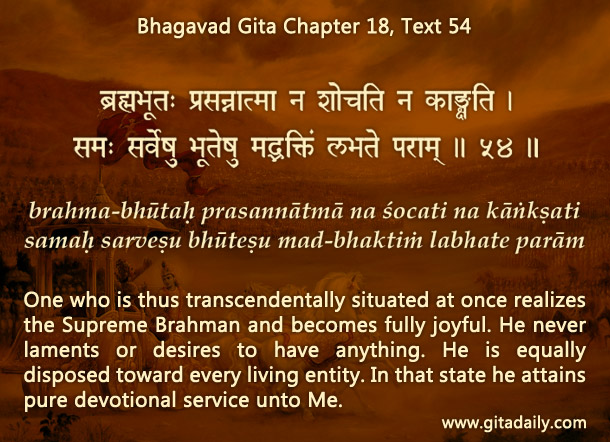Whenever our surroundings go dark, say, due to a power failure, we become as if blind.
Something similar happens to us as souls in material existence. Due to our material attachments, we can’t see anything beyond matter – we become as if spiritually blind. To regain our spiritual vision, we need to shed our material attachments.
However, during our spiritual recovery, we may be blinded by an excess of light, just as a person on dark road may be blinded by a truck’s glaring front lights. The dazzling impersonal effulgence that surrounds the supreme spiritual truth can similarly blind us. How? Firstly, it can render us incapable of perceiving anything beyond the light. Secondly and more deleteriously, it can make us misconclude that the spiritual light is itself the highest spiritual truth, so no further search is necessary. This misconclusion terminates our spiritual quest at an intermediate impersonal level instead of the ultimate personal level.
To prevent premature termination of our spiritual quest, we need to place our experiences and inferences within the context of scriptural revelation.
To prevent such premature termination of our spiritual quest, we need to place our experiences and inferences within the context of scriptural revelation. Echoing a similar level of realization, the Ishopanishad (mantra 15) reveals a classic prayer wherein the seeker requests the Absolute Truth to withdraw the blinding effulgence and thus make the face of the Truth visible.
Gita wisdom reveals that Absolute Truth to be Krishna. While delineating a similar spiritual trajectory, the Gita (18.49–54) mentions how the seeker becomes equipoised towards everything material and attains the spiritual (brahman) level. Significantly, it (18.54) mentions this attainment not as the culmination of the spiritual quest, but as the commencement of transcendental devotion. By such devotion, the next verse (18.55) states, seekers understand Krishna in truth.
Thus the perception of the Absolute Truth that the Ishopanishad prays for, the Gita paves the path to.

Explanation of article:

Leave A Comment